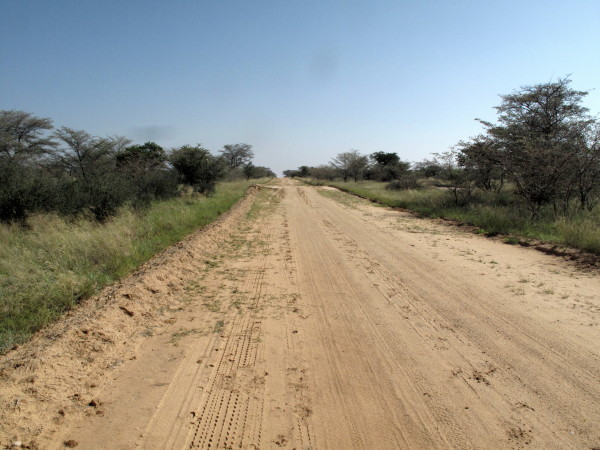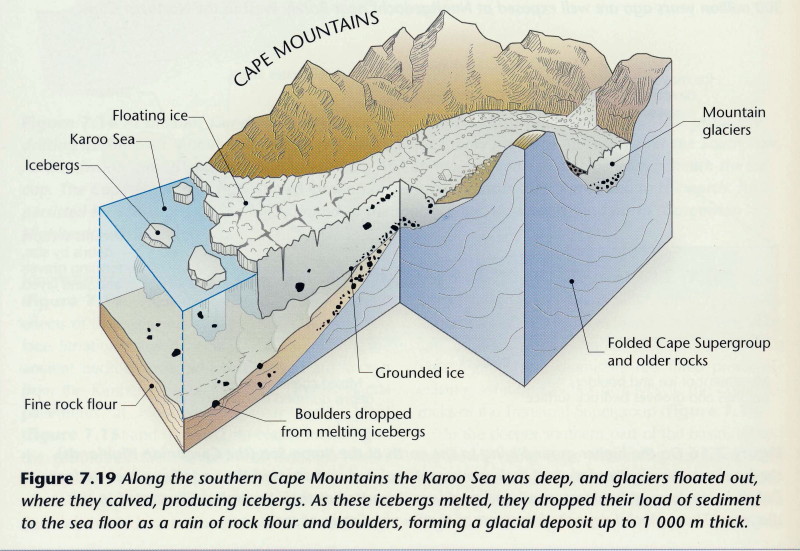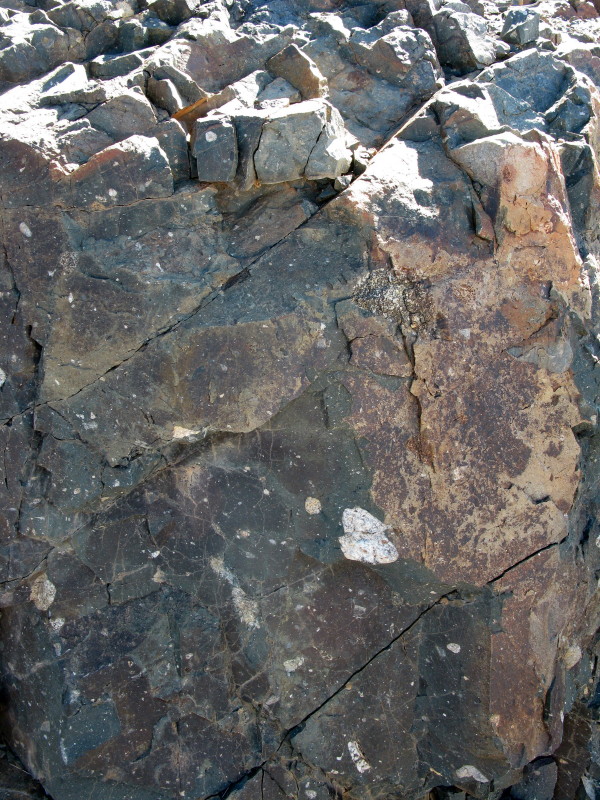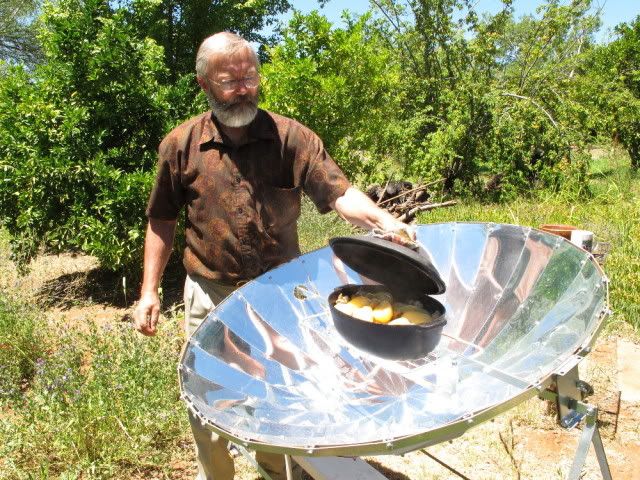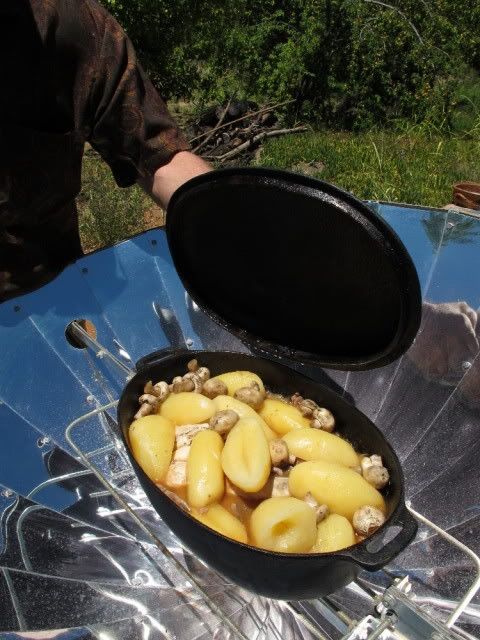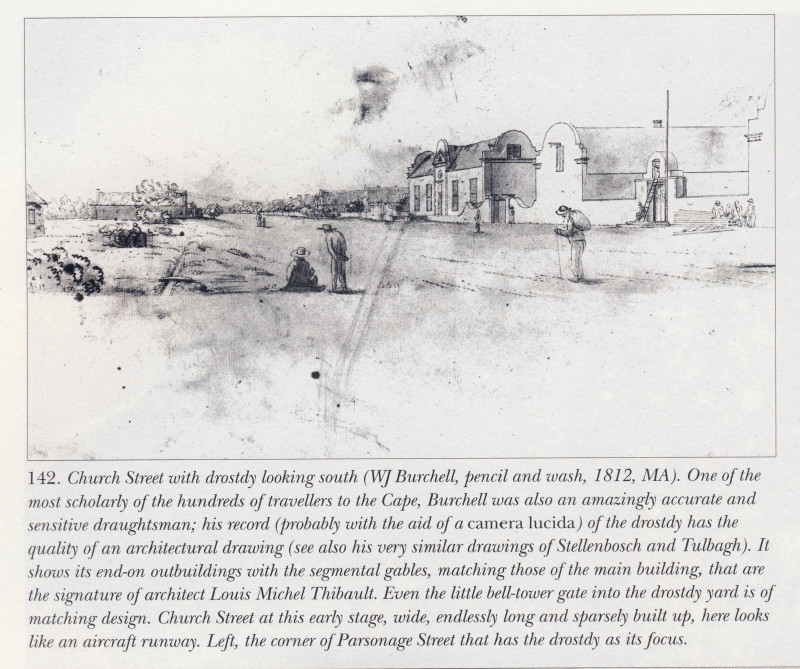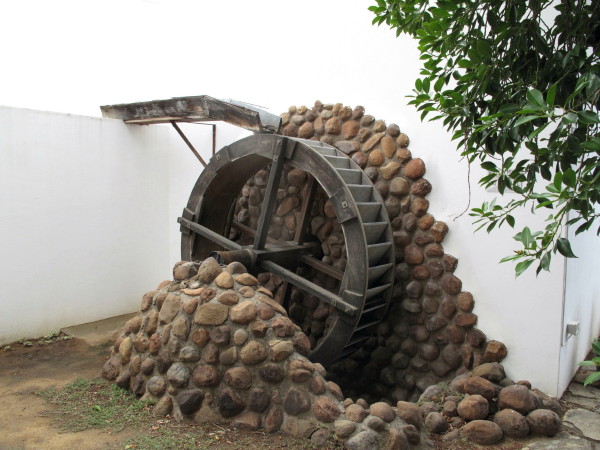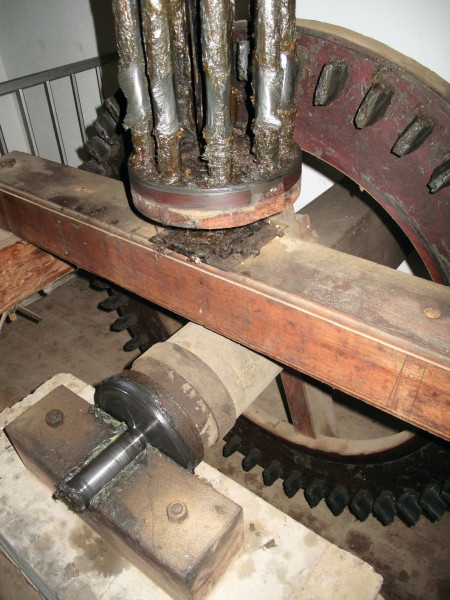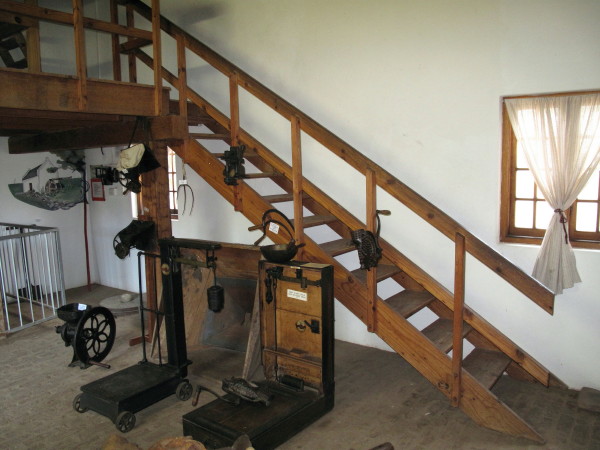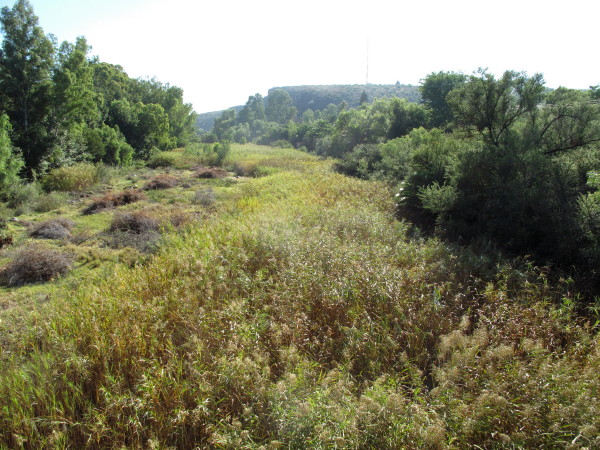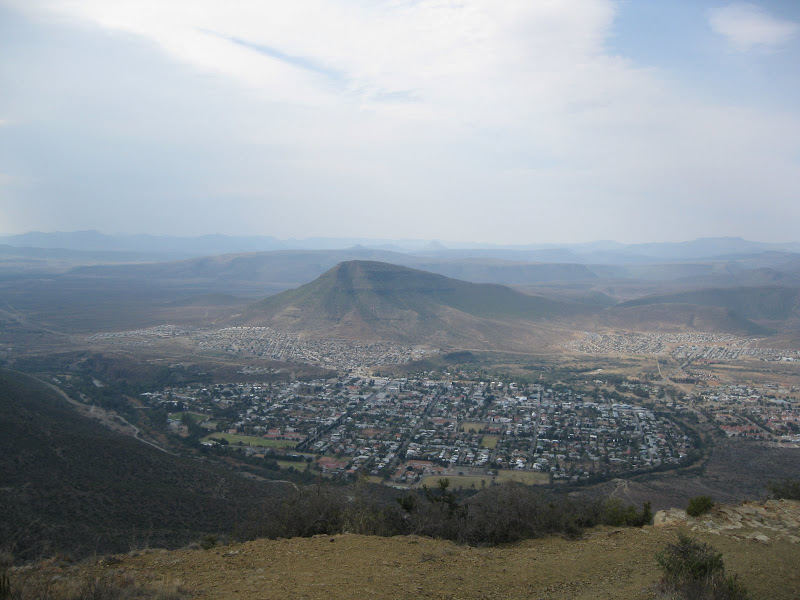tok-tokkie
Race Dog
My track looking for the sites.
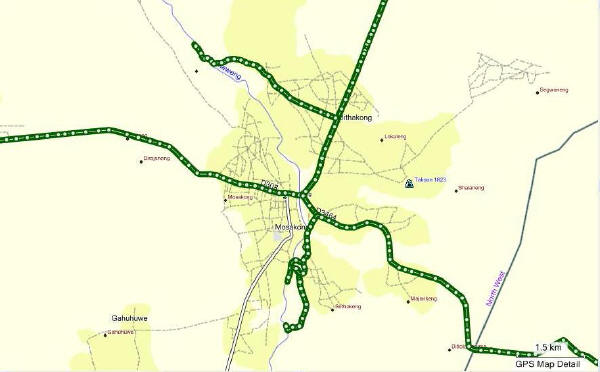
Here is a second Daniell view, similar to the previous setting but closer to what I found upstream.
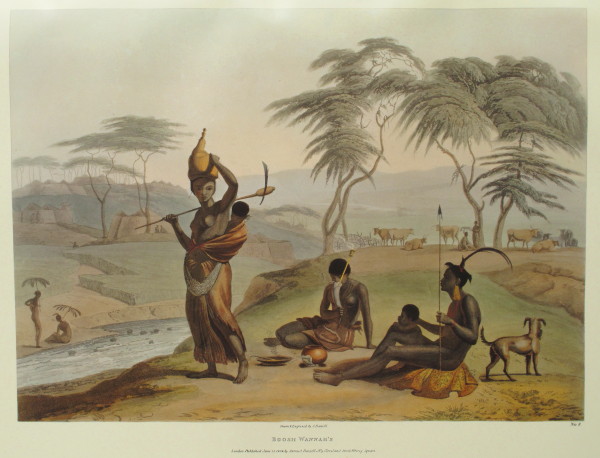
There are two other Daniell pictures. That is a big clay mielie storage silo. Notice the umbrella like sunshade of ostrich feathers; also on the first Daniell picture and the next one.
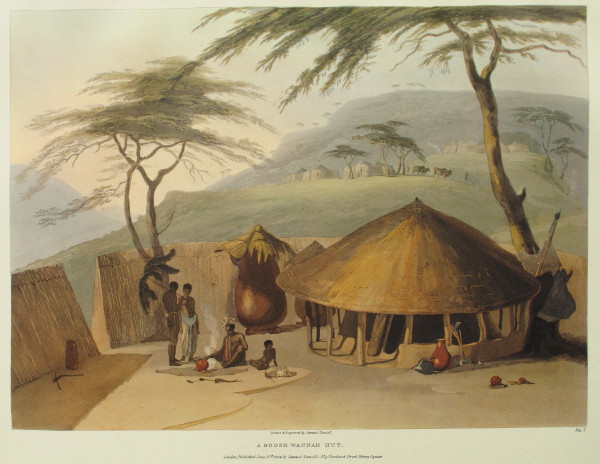
Here is a picture of a woman making one of the mielie storage silos (2:520). The women also built the houses entirely without any input from the men (2:455 2:515). The men attended to the cattle and gathered in the mootsi (public enclosure) to chat about social and political matters (2:371 2:386 2:522). The women attended to the fields also.
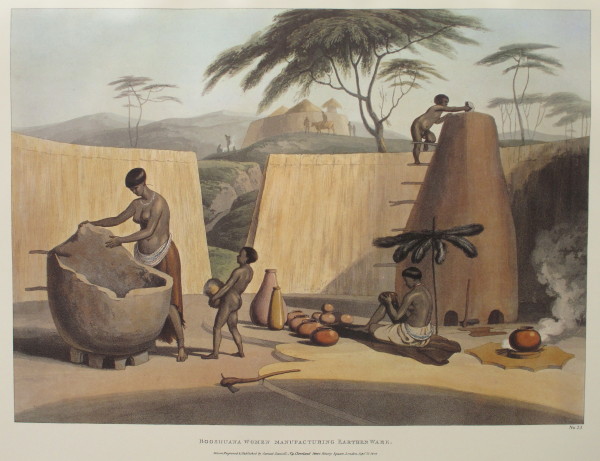
Daniell shows the roof extended past the walls and was supported by poles. I saw a few huts like that but, unfortunately, only took one photo of a poor example.
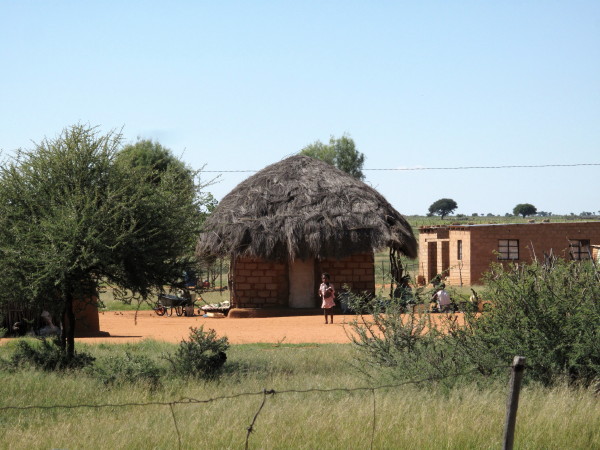
Burchell has this plan and section view of a Bachapin hut. On the outside is a wall of woven tree branches enclosing the ‘erf’, also to be seen in the Daniell pictures. In the drawing the entrance into the front yard is at the bottom of the picture. Burchell writes
I have shown that Burchell was an excellent cartographer. Here he displays his abilities as an architect and draughtsman.
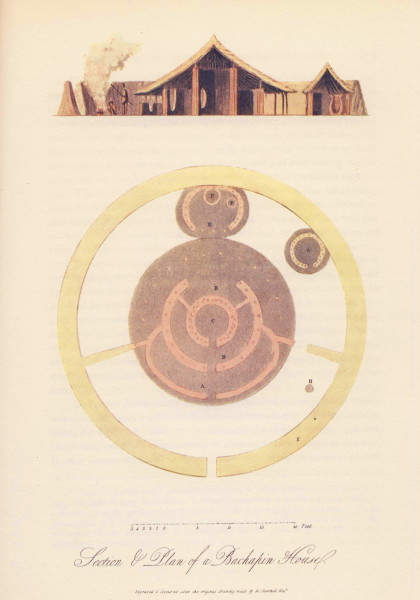
An engraving of a hut of one of the chieftans. Burchell remarks that it was much more modest than many of the other huts at Litakun (2:521). Status was earned by your social behaviour it seems and not by your outward appearance as is now the custom. The yard enclosed by the reed fence had a public front section and a private rear section. There was a screen wall inside the house so the interior was not visible from the outside.
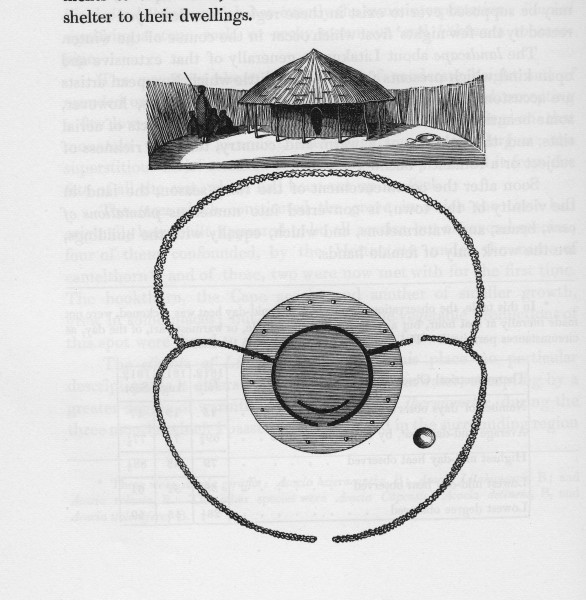
An engraving of a ‘Bachapin’ hut.
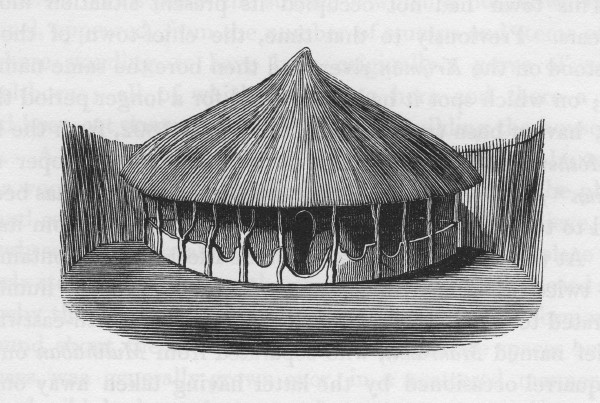
I stated that the ‘Bachapin’ men spent a lot of time talking. Burchell includes this engraving of himself at one such meeting.
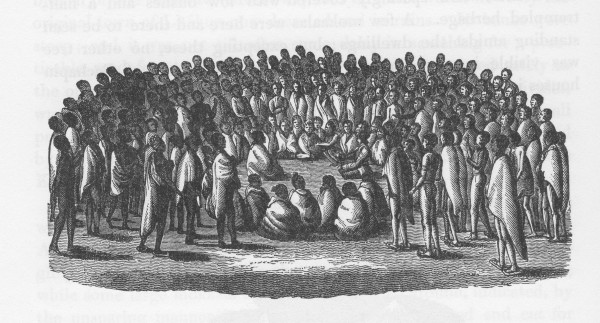
The chief endlessly demanded, at such meetings, that Burchell trade a musket as the locals felt very threatened by their neighbouring clan who had recently obtained muskets (2:376). This haggling and demanding continued until they obtained one by a ruse (2:405).

Here is a second Daniell view, similar to the previous setting but closer to what I found upstream.

There are two other Daniell pictures. That is a big clay mielie storage silo. Notice the umbrella like sunshade of ostrich feathers; also on the first Daniell picture and the next one.

Here is a picture of a woman making one of the mielie storage silos (2:520). The women also built the houses entirely without any input from the men (2:455 2:515). The men attended to the cattle and gathered in the mootsi (public enclosure) to chat about social and political matters (2:371 2:386 2:522). The women attended to the fields also.

Daniell shows the roof extended past the walls and was supported by poles. I saw a few huts like that but, unfortunately, only took one photo of a poor example.

Burchell has this plan and section view of a Bachapin hut. On the outside is a wall of woven tree branches enclosing the ‘erf’, also to be seen in the Daniell pictures. In the drawing the entrance into the front yard is at the bottom of the picture. Burchell writes
Plate 9 is a plan, with a geometrical elevation, or rather section, of a bachapin dwelling. In order to show its structure, it is here represented as cut through-jar to the side of the door-way in the outer fence. In the ground-plan, A is the veranda; b, the outer room; c, the inner, or central room; D, the storeroom; E, the corn-house; F,F corn-jars; G, the servants’ house; H, the fireplace; and I, the outer fence.
I have shown that Burchell was an excellent cartographer. Here he displays his abilities as an architect and draughtsman.

An engraving of a hut of one of the chieftans. Burchell remarks that it was much more modest than many of the other huts at Litakun (2:521). Status was earned by your social behaviour it seems and not by your outward appearance as is now the custom. The yard enclosed by the reed fence had a public front section and a private rear section. There was a screen wall inside the house so the interior was not visible from the outside.

An engraving of a ‘Bachapin’ hut.

I stated that the ‘Bachapin’ men spent a lot of time talking. Burchell includes this engraving of himself at one such meeting.

The chief endlessly demanded, at such meetings, that Burchell trade a musket as the locals felt very threatened by their neighbouring clan who had recently obtained muskets (2:376). This haggling and demanding continued until they obtained one by a ruse (2:405).





